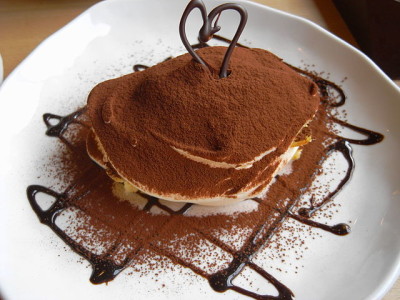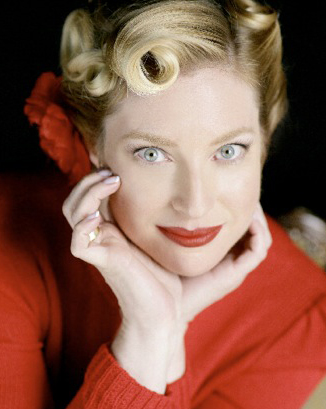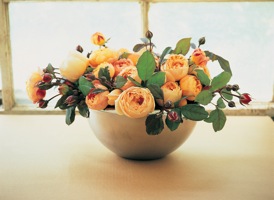
The Modern Butlers’ Journal volume 11, issue 5
International Institute of Modern Butlers
 Message from the Chairman
Message from the Chairman
In our litigious age, a database of employers as portrayed in one particular Jeeves and Wooster episode at the London-based butlers’ Ganymede Club would have to remain as thoroughly redacted as Freedom of Information Act responses seem to be these days. So we resort to trial and error, hoping to track down anyone with first hand knowledge of an employer’s character, or an agency with a private database created through trial and error that they may be willing to share.
On a recent hiring project, an Internet search found no corroboration of a healthy suspicion, nor did interviews with one former staff—so we proceeded to find likely candidates for a seemingly attractive position. Fortunately, with the first candidate interviews with the client’s recruiter scheduled for the very next morning, we managed to finally find first-hand evidence of the suspected felonious behaviour and were able to cancel the interviews and indeed the contract with the client. Ten hours of lost time on our part, but the butler candidates were saved from a lot worse than that if they had been hired.
If no central database could exist, accessible by many, then perhaps agencies should set up backchannels through which they can confer quickly with likely colleagues on those principals about which they have suspicions. Doing so would help provide a better service to the candidates we field.
Butlers in the Media
An interesting article by the son of a former Highclere butler (the setting for the TV series Downton Abbey) that provides interesting information on life in service almost a century ago from the perspective of an outsider looking in.
Such stories are not of the same ilk as a book that will soon be published in which the White House staff in DC tell all about their principals. “These kinds of stories have rarely been told,” writes a reporter. “But it seems there was never a formal policy demanding secrecy from residence staffers, just a long-standing culture of discretion.” A sign of the times that the reporter does not ask what happened to that “long-standing culture of discretion” nor question for one moment its untimely demise.
The latest use of our profession in other avenues for marketing purposes now includes Shoe Butler for high-end shoe repairs, Robot Butler Casino Slots (can someone please explain what these are—they are as unfathomable as the Japanese butler cartoons), and The Master’s Butler Concierge, which doubles down by drawing on two professions for its cachet.
No issue would be complete without a mention of the robot butler concept—this one from the 1940s.
For those hotel managers wondering how much they should increase their rack rate for providing butler service, the Ritz in London has stated theirs to be 360 GBP or around $500 per diem. Such decisions should be directed in part by just how much their butlers do for their guests—and judging from the link, The Ritz does a fair amount but could do more when compared with the offerings of other hotels and resorts.
 Letters to the Editor
Letters to the Editor
I absolutely love the fruit and soap carvings! I can’t imagine a butler having enough time in their busy day to produce such beautiful, functional objects. Well done! And that chocolate bread pudding – it almost dropped me to my knees. JH
As always, another good edition of The Modern Butlers’ Journal. I am always excited to read each new edition. As you know, I am not in the butler profession but am an interior designer. We pride ourselves on our service, too. I always learn much from each issue and refer clients to your organization when they are looking for professional service. Thank you for sharing your expertise. JL
Soap and Fruit Carvings

Let’s Talk about Spirits, Part 15
by Amer Vargas
Amaretto
Oh, mamma mia! Today we visit Italy to find out more about a famous and versatile liquor: Amaretto.
The name “amaretto” comes from the diminutive of the Italian amaro, meaning “bitter” and referring to one of the main ingredients of the original liqueur: bitter almonds and/or apricot kernels. But these are not the only components, and many sweeteners (including sweet almonds) make the bitterness almost undiscernible. Hence the name of amaretto, which means “a little bitter.”
The liqueur has its origin in Saronno, near Milan, where there are many producers, but similar liqueurs are produced elsewhere, so it is not surprising to read Amaretto di Saschira or Amaretto di Torino on labels.
Two tales seem to hold the key to the origin of the liqueur, both espoused by major brands of the drink.
Di Saronno Originale, formerly named Amaretto Disaronno and Amaretto di Saronno Originale, holds that in 1525 Bernardino Luini, a pupil of Leonardo da Vinci, was commissioned to paint Saronno’s church with frescoes depicting the Virgin Mary, to whom the sanctuary was dedicated. The painter chose a young widowed innkeeper (thought to be his lover) as a model and to prove her gratitude and affection, the lady steeped apricot kernels and mixed them with brandy, and presented the blend to her admirer.

Another important amaretto brewer, Paolo Lazzaroni & Figli, which produces Lazzaroni Amaretto, claims that the original brew is an infusion of Amaretti di Saronno, small almond-flavored pastries/biscuits traditional to Saronno. In the early 18th century, a cardinal surprised the town of Saronno with a visit and a young couple created the biscuits to honor and welcome him. The original biscuits were made with sugar, egg whites, and crushed apricot kernels or almonds. The cardinal was so impressed that he blessed the couple with a happy and lifelong marriage.
The current version of the liqueur was first produced in 1817 by Amaretto di Saronno Originale, which remains the world’s number 1 producer and distributor.
The taste of amaretto combines the sweetness of apricot kernels oil with the bitterness of almonds, together with caramelized sugar, the essence of seventeen aromatic fruits and plants within which vanilla, peach and cherry stand out, all infused in pure alcohol. The different producers present amaretto in 25 to 30 proof alcohol. Interestingly enough, Disaronno Originale states their amaretto contains no almonds and is completely nut-free, so it is safe for people with nut or related allergies.

In the two hundred years of its existence, amaretto has kept its original taste (and aphrodisiac properties, according to the love stories of its origins). Not only is the flavor exceptional, but so is its presentation: Most brands present the liqueur in a rectangular-shaped glass decanter that a craftsman from Murano (near Venice) designed in 1942.
The delicious taste of amaretto is essential in many cocktails like the French Connection (where it is combined with Cognac and Ice), the Godfather (combined with Scotch and ice) and the Godmother (combined with Vodka and ice), as well as in cooking, where it may enrich the flavor of pancakes or enhance the taste of chicken.
And a personal favorite: amaretto is the liqueur that gives a world famous dessert its unforgettable character, namely Tiramisu!

Enjoy!
Mr. Vargas is the Institute’s Vice President for Europe and can be contacted via AmerVargas at modernbutlers.com
Would someone care to provide a caption for this photograph?
Of Butlers and Roses, Part 13 of 20
by GJ dePillis
Evaluating the Right Rose to Grow: Fragrance
Mr. Michael Marriott, a British rose expert and Senior Rosarian at David Austin Roses in Shropshire, England, shared his expertise on fragrance with us: “I have become a rather compulsive sniffer…if a rose is not fragrant, the disappointment is somehow deeper, ” he explained.
One of Mr. Marriott’s tasks as Senior Rosarian is to oversee the official description of the fragrance of each of Austin’s English Rose varieties. In this task he is joined by Austin’s “rose nose” Robert Calkin, a British perfumer and floral-fragrance educator. “We spend three delightful, dedicated days each year literally drifting in a sea of fragrance. We amble about our nearly 2-acre show garden, sniffing rose after rose, debating and fine tuning our thoughts on the signature scent characteristics of each,” Mr. Marriott said.
“The fragrance in roses comes from two different sources: the petals, but sometimes it also emanates from the stamens. This is especially true in varieties with single or semi-double flowers where stamens are abundant.”

The fragrance from the petals, according to Mr. Marriott, is derived from the mix of oils or “base notes”, but those base notes can be mingled with up to 300 top notes, or other oils. It is this blend that gives each variety it’s distinctive fragrance. About four days before a bud blooms, if the weather is warm, the oils will release, creating a stronger fragrance once in flower.
Roses can possess scents belonging to tea rose fragrance, myrrh, fruity, clove, cocoa, citrus, black current, and musky. Try smelling two roses side by side to determine the differences.
“When smelling a rose don’t just give it a quick sniff,” explains Mr. Marriott. “Try to smell it as you might savor a good wine by rolling it around the nose. Everybody’s nose smells things differently, so don’t be shy about describing the scents you sense or detect.”
What would one suggest for somebody who wants a rose with a “typical rose” fragrance? It has been reported that the David Austin variety Constance Spry was a favorite of Steve Jobs, because it possesses a fragrance that one typically associates with roses and could be referred to as a “typical rose” fragrance.
Ms. dePillis is a freelance contributor to the Journal who is based on the West Coast of the United States. She can be reached via depillis at gmail.com
Consulting the Silver Expert
by Jeffrey Herman
Advice for Flood Victims
If your silver was caught in a flood, gently shake any piece that might have hollow spaces (e.g., sockets on teapots and coffeepots that contain ivory heat insulators or wooden handles, hollow handles on some flatware, hollow rims, and candlestick cups with double walls). If you can hear water swishing within these areas, contact a qualified restorer (for referrals, ask a museum with a large silver collection or an antique silver dealer).
If the object has no hollow areas, rinse it well to remove any dirt or grit. When the piece feels clean to the touch, wash it with a cellulose sponge, using a non-lemon-scented phosphate-free, antibacterial detergent and warm water.
If rust is present on carbon steel knife blades of older pieces, or on the worn edges of knife blades coated with silver, do not use steel wool or Navel Jelly to remove it!
When in doubt, stop! Contact an expert before doing irreparable harm to the silver.
Mr. Herman continues to offer his services to our readers for any questions you may have about the care of silver. Either call him at (800) 339-0417 (USA) or email jeff at hermansilver.com
The Institute is dedicated to raising service standards by broadly disseminating the mindset and skills of that time-honored, quintessential service provider, the British Butler, adapted to the needs of modern employers and guests in staffed homes, luxury hotels, resort, spas, retirement communities, jets, yachts, & cruise ships around the world.




